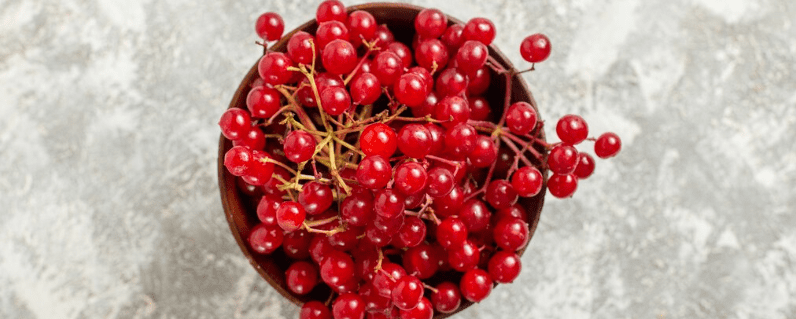
Viburnum opulus
Latin name: Viburnum opulus
Short name: Vib
Common name: Cramp Bark | Highbush Cranberry | Guelder Rose | Snowball Tree | European Cranberrybush
Primary miasm: Psoric
Kingdom: Plants
Family: Adoxaceae
- Symptomatology
- Remedy Information
- Differentiation & Application
Viburnum opulus is a deciduous shrub native to Europe and North America, known for its red berries and use in traditional herbal medicine. In homeopathy, it is prepared from the bark of the root and is especially known for its antispasmodic action on uterine muscles, making it a classic remedy for painful menstruation and spasmodic pelvic complaints.
Used in traditional herbalism as a muscle relaxant and uterine antispasmodic. Employed in tincture or decoction form for cramps, premenstrual tension, and miscarriage prevention
Introduced by Dr. Burt, and later clinically confirmed by Hale and others in American homeopathy. Not extensively proved in the Hahnemannian method but widely accepted based on clinical efficacy.
- Uterus and pelvic organs – Especially spasmodic dysmenorrhoea, neuralgic pelvic pain, threatened abortion
- Muscles and nerves – Cramping, twitching, and spasmodic pains
- Lumbar and sacral spine – Pain radiating from back to uterus or thighs
- Gastrointestinal tract – Colic, tenesmus, spasm
- Bladder – Irritable bladder, frequent urging with uterine symptoms
- Lying down with legs drawn up
- Pressure against abdomen
- Warmth
- After passing stool or gas
- Sleep or rest
- Cold air or exposure
- Standing or walking
- Onset of menses
- Before or during menstruation
- Mental or emotional stress
- Sexual excitement
- Magnesia phosphorica – Colicky dysmenorrhoea better with heat and pressure; more general in action
- Cimicifuga – Neuralgic uterine pain with mental depression, but less cramping
- Pulsatilla – Menses irregular, gentle disposition; Vib. more spasmodic and irritable
- Caulophyllum – Spasmodic uterine pains with small, feeble contractions; more focused on labour
- Belladonna – Sudden, throbbing pains with heat and redness; Vib. has more cramping and less intensity
- Secale cornutum – Uterine haemorrhage with painless flow; Vib. is cramping without heavy flow
- Complementary: Magnesia phos., Pulsatilla
- Antidotes: Nux vomica, Camphora
- Follows well: Chamomilla, Caulophyllum
- Inimical: Belladonna (in high sensitivity)
Viburnum opulus is the remedy of spasmodic cramping, especially in the uterine and pelvic region. Its central theme is sudden, sharp, and constrictive pain, appearing before or during menstruation, often accompanied by nervous unrest, emotional volatility, and profound relief from warmth, pressure, or flexion. It is suited to sensitive, nervous women, particularly during puberty or in early reproductive years. The pain is not from pathology but functional nerve-muscle spasms. The remedy exemplifies the psoric dynamic: changeable, reactive, responsive to emotion, and intensified by nervous triggers.
- First remedy to consider in spasmodic dysmenorrhoea, especially in young women or girls
- Valuable in threatened miscarriage with colicky pain and restlessness
- Helpful for cramps before flow, where no organic lesion is found
- Combine with Mag. phos. for synergistic action in difficult cases
- Useful in neuralgic pelvic conditions with marked spinal connection
Female
- Dysmenorrhoea, cramping
- Menses, painful before flow
- Threatened abortion, with colic
- Pain, uterus, extending to thighs
Back
- Pain, lumbar, radiating
- Sacral pain before menses
Mind
- Irritability, before menses
- Anxiety, uterine pain with
- Restlessness during cramps
Generalities
- Spasms, uterine
- Better pressure
- Worse cold air
Sleep
- Disturbed, before menses
- Dreams, pregnancy, bleeding
- E.M. Hale – New Remedies: First detailed account and clinical experience with Viburnum, especially in uterine cramps and miscarriage
- T.F. Allen – Encyclopedia of Pure Materia Medica: Proving notes and indications in uterine neuralgia
- John Henry Clarke – Dictionary of Practical Materia Medica: Confirmations of uterine spasms and pelvic affections
- William Boericke – Pocket Manual of Homoeopathic Materia Medica: Clinical summary and generalities
- C. Hering – Guiding Symptoms: Nervous and reproductive connections
